Quan Thanh Temple is one of the oldest and most significant temples in Hanoi, Vietnam. It serves as a magnificent representation of Vietnamese culture, embodying the dual influences of Buddhism and Taoism. The temple attracts numerous visitors each year, not only for its religious significance but also for its architectural beauty and historical relevance.
Where Is Quan Thanh Temple Located?
The location of Quan Thanh Temple is crucial to understanding its historical significance and accessibility. Nestled alongside the serene waters of West Lake, it provides a tranquil environment that enhances the spiritual experience for visitors.
Overview of the Location
Quan Thanh Temple sits in the heart of Hanoi, specifically in the Ba Dinh District, which is known for its rich history and prominent landmarks. The temple is surrounded by lush greenery and the picturesque views of West Lake, making it a serene retreat from the bustling city.
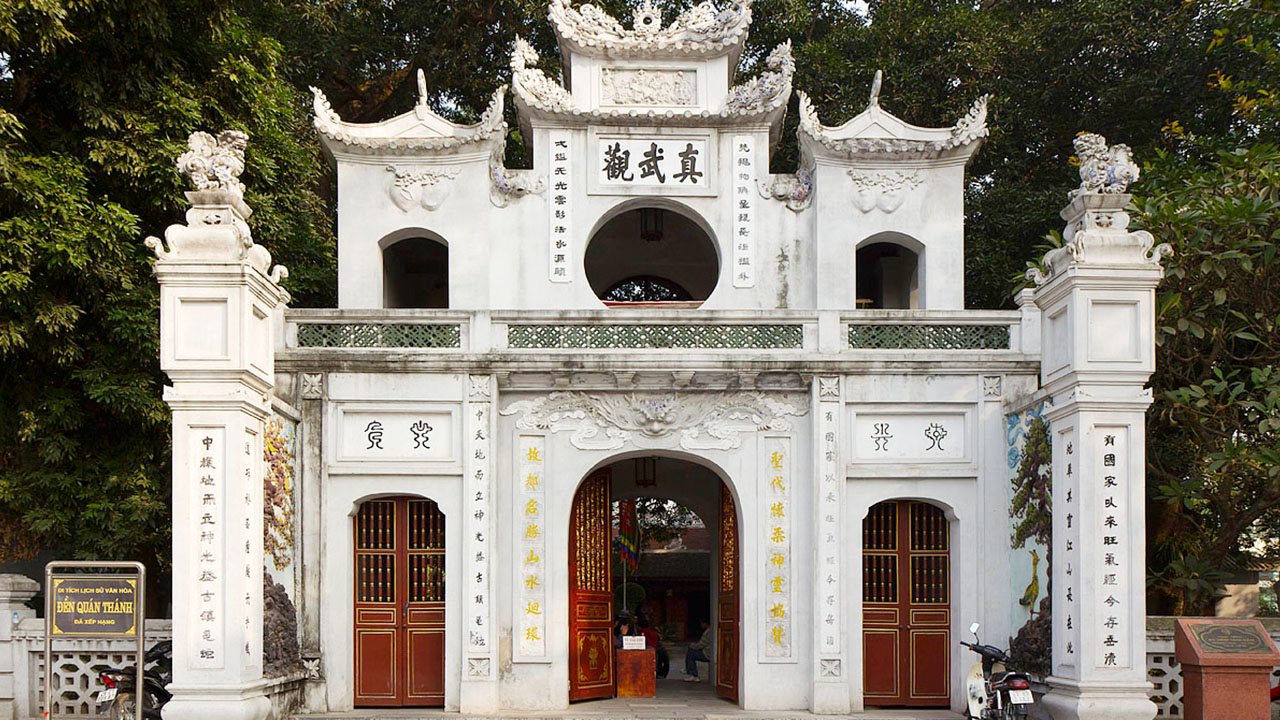
This prime location is not only a geographical advantage but also enriches the temple’s cultural context. Being part of Hanoi, a city that has witnessed centuries of Vietnamese history, it connects deeply with both local legends and national identity. The ambiance around Quan Thanh Temple creates a unique atmosphere that resonates with the spiritual practices observed within its walls.
Video summary of the article about “Quan Thanh Temple”
Accessibility and Transportation Options
Accessing Quan Thanh Temple is relatively easy due to its strategic location. Visitors can utilize various transportation options, including taxis, motorbikes, and public buses. For those staying in central Hanoi, a leisurely walk along the scenic paths by West Lake can be an enriching experience.
The availability of rideshare services further simplifies the journey to the temple. Once at the temple, visitors will find ample space for parking if they choose to drive. Given the popularity of the site, it is advisable to arrive early to avoid crowds, particularly during weekends or holidays.
Nearby Landmarks and Attractions
The area surrounding Quan Thanh Temple is rich in attractions that enhance the visitor experience. Just a stone’s throw away lies West Lake, where visitors can enjoy a peaceful stroll or partake in various water activities.
In addition to the lake, Tran Quoc Pagoda, another historical gem, is nearby. This ancient pagoda is celebrated for its serene beauty and historical context, making it an ideal continuation of your spiritual journey after visiting Quan Thanh Temple.
Furthermore, the Ho Chi Minh Mausoleum is easily accessible, allowing visitors to engage with Vietnam’s revolutionary history while experiencing the cultural richness of the surrounding area.
Introduction to Quan Thanh Temple
To truly appreciate Quan Thanh Temple, one must delve into its historical importance, architectural features, and the deities worshipped therein. Each of these aspects contributes to its status as a revered landmark in Hanoi.
Historical Significance of Quan Thanh Temple
Quan Thanh Temple was originally constructed in the 11th century, dedicated to the Taoist deity Tran Vu, who is believed to protect the northern gates of the ancient Thang Long citadel. Over the centuries, the temple has undergone several renovations, reflecting both the resilience of Vietnamese culture and the continuity of its religious practices.
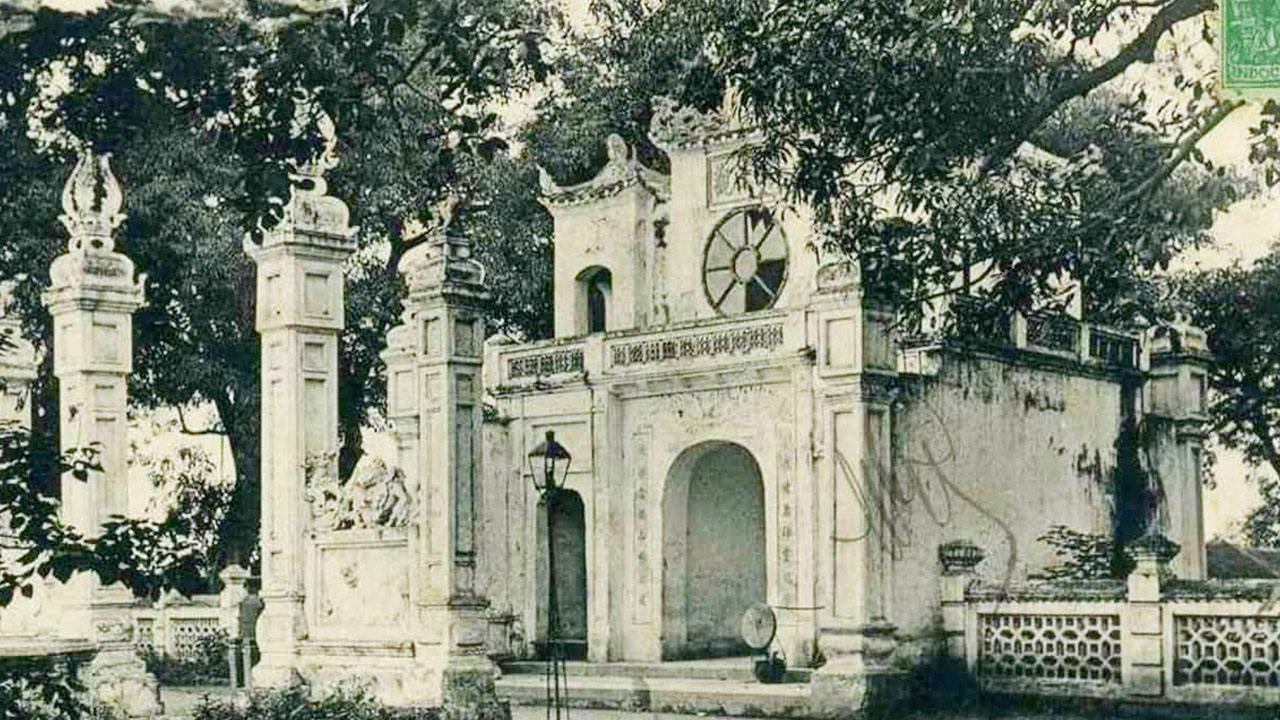
This temple stands as a historical testament to the syncretism of Buddhism and Taoism in Vietnam. As such, it hosts a myriad of rituals that have been carried down through generations, connecting contemporary worshippers with their ancestors. Local legends tell stories of how the temple served as a refuge during periods of war and social upheaval, thus cementing its significance as a sanctuary of peace and spirituality.
Architectural Features of the Temple
The architectural design of Quan Thanh Temple is a blend of traditional Vietnamese style with intricate Chinese influence. The temple features delicately carved wooden pillars, vibrant frescoes, and the iconic three-entrance gate.
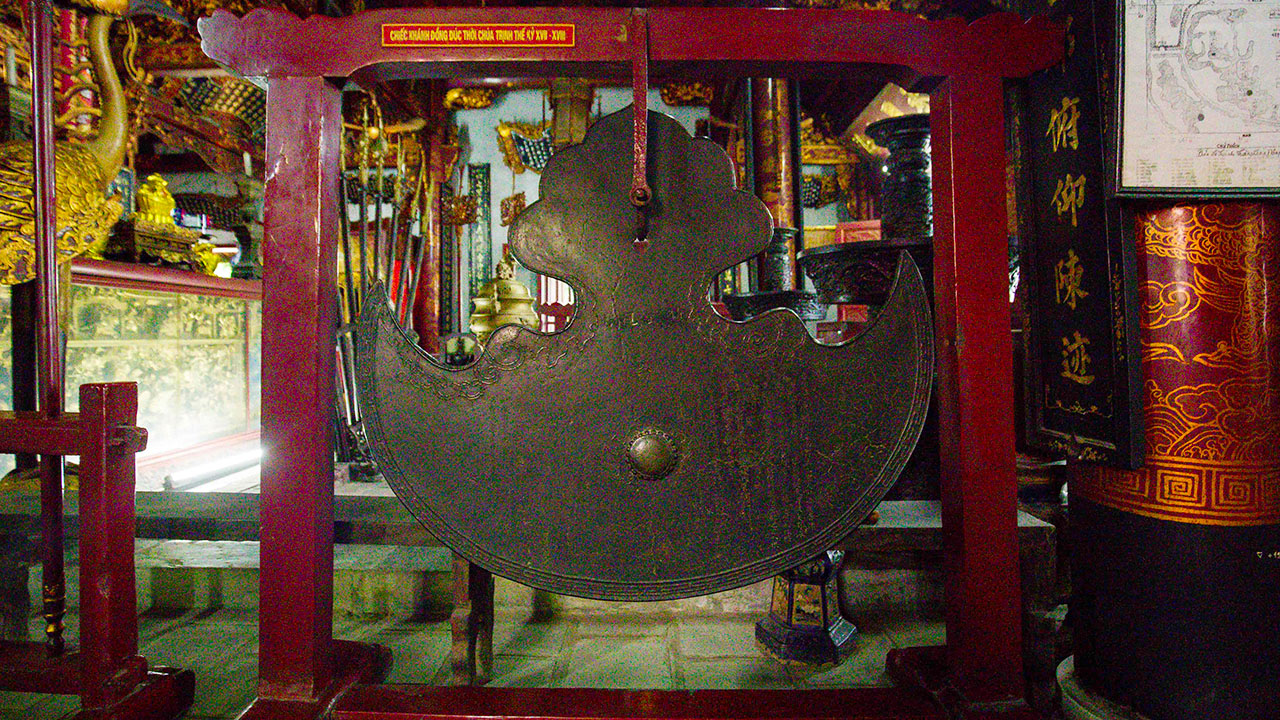
Inside the temple, one can find the imposing statue of Tran Vu, crafted from rare black stone, which evokes a sense of reverence. The details in the craftsmanship reflect the artisans’ dedication and skill, making every corner of the temple a feast for the eyes. The layout also incorporates natural elements, harmonizing with the lush surroundings and enhancing the overall spiritual atmosphere.
Deities Worshipped at Quan Thanh Temple
At the core of Quan Thanh Temple’s significance is the worship of Tran Vu, the guardian deity of the north, who embodies strength and protection. Alongside him, other deities are also honored, representing the diverse spiritual beliefs within Vietnamese culture.
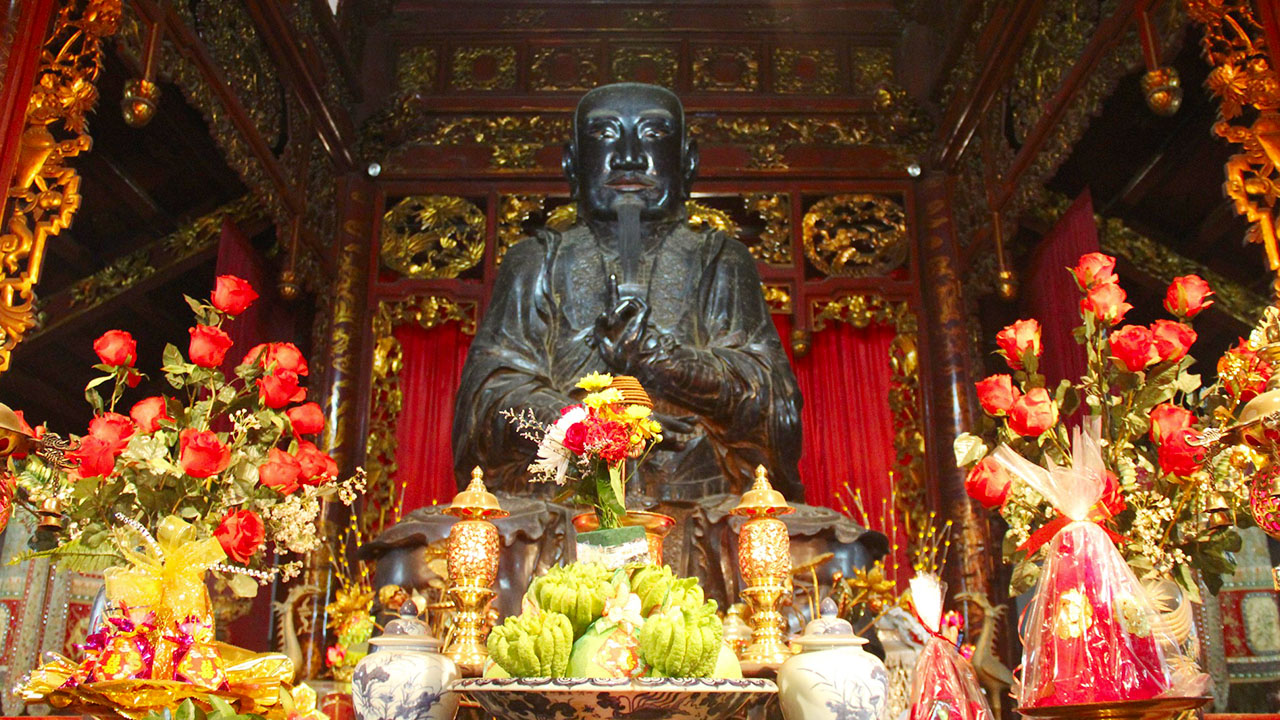
Visitors often witness locals engaging in various ceremonies, offering incense and prayers. These religious practices provide insights into the lives of the community members who consider this temple a vital part of their spiritual existence. The harmony between different religions within the temple encourages a deep sense of unity among worshippers, reinforcing the idea that spirituality can transcend cultural divides.
Opening Hours and Entrance Fees for Quan Thanh Temple
Visiting Quan Thanh Temple requires knowledge of its operating hours and any potential fees associated with entry. Understanding these details ensures a smooth visit and allows guests to fully immerse themselves in the experience.
Regular Visiting Hours
Quan Thanh Temple typically opens early in the morning and remains accessible throughout the day. The early hours are especially popular among locals who come to pray and seek blessings before beginning their daily routines.
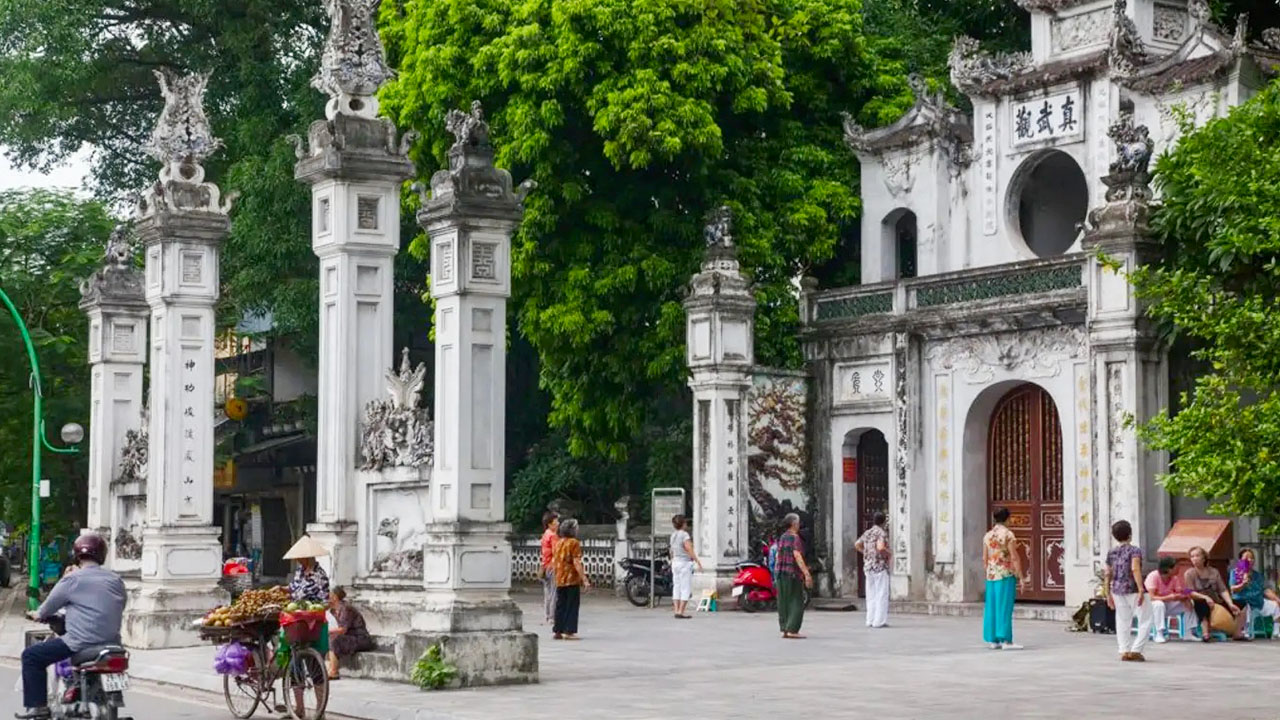
As the day progresses, the temple sees increased foot traffic from tourists eager to explore its rich heritage. Those wishing to experience the serenity of the temple should consider visiting during off-peak hours, which may offer a more intimate connection with the sacred space.
Special Events and Holiday Schedules
Throughout the year, Quan Thanh Temple holds special events and festivals that attract large crowds. Notable celebrations include the Lunar New Year (Tet) and the worship of Tran Vu. During these occasions, the temple comes alive with music, dance, and various cultural displays, creating a vibrant atmosphere.

It is essential for visitors to check the temple’s schedule ahead of time if they plan to attend these festivities. Participating in these events offers a unique opportunity to witness local traditions and the communal spirit of the people.
Entrance Fees and Donation Information
There is no formal entrance fee to visit Quan Thanh Temple, making it accessible to all who wish to pay their respects. However, donations are welcomed to help maintain the temple and support ongoing preservation efforts.
Many visitors choose to contribute, viewing it as a way to express gratitude for the spiritual experiences they have enjoyed. This practice of giving fosters a sense of community among those who frequent the temple, reinforcing the values of generosity and shared belief.
Top Attractions Near Quan Thanh Temple
After exploring Quan Thanh Temple, visitors have the opportunity to extend their exploration to several nearby attractions that showcase the cultural and historical richness of Hanoi.
West Lake: An Overview
West Lake, known locally as Ho Tay, is one of Hanoi’s most cherished natural landmarks. Stretching over 15 kilometers, it serves as a recreational area for both locals and tourists alike. The serene waters are dotted with traditional fishing boats, and the surrounding promenade invites couples and families for leisurely strolls.
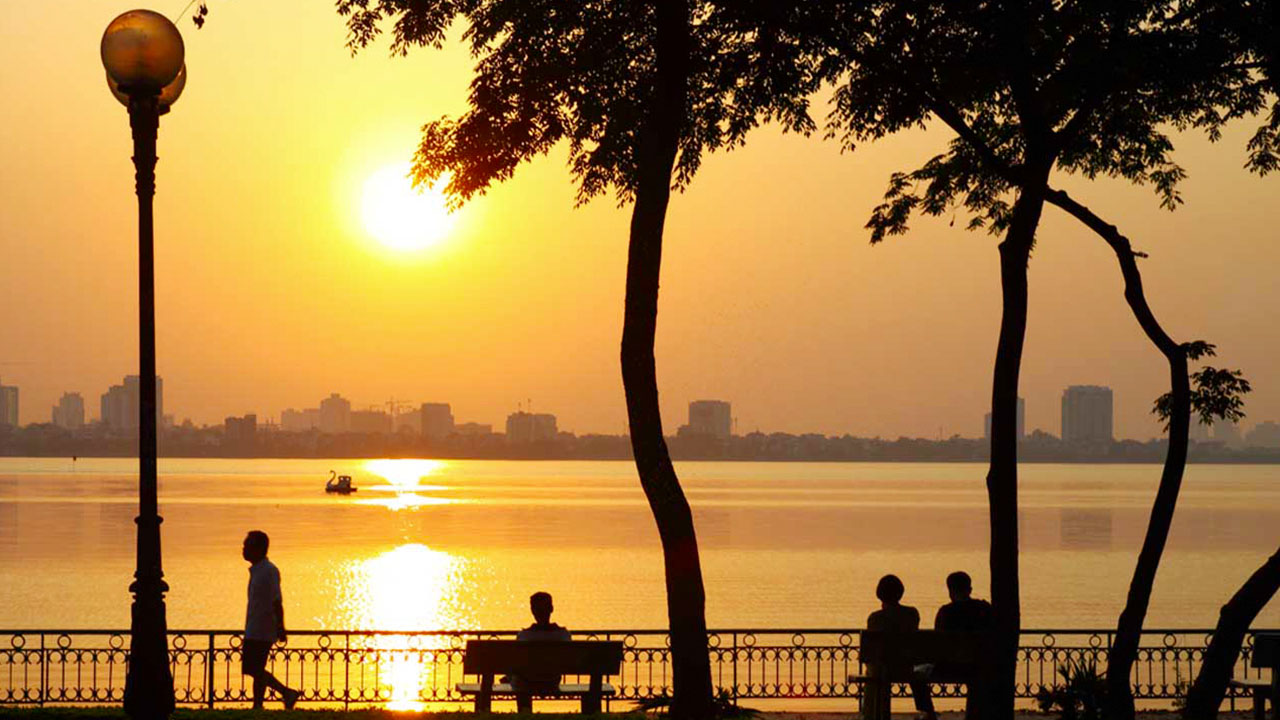
The lake’s beauty is enhanced by various gardens, cafes, and restaurants lining its shores. Whether enjoying a quiet moment by the water or indulging in the local cuisine at nearby eateries, West Lake complements the spiritual experience of Quan Thanh Temple perfectly.
Tran Quoc Pagoda: Historical Context and Importance
Nestled on a small island within West Lake, Tran Quoc Pagoda stands as one of the oldest Buddhist sites in Vietnam. Dating back to the sixth century, it has been a center of religious activities and a symbol of Vietnamese resilience.
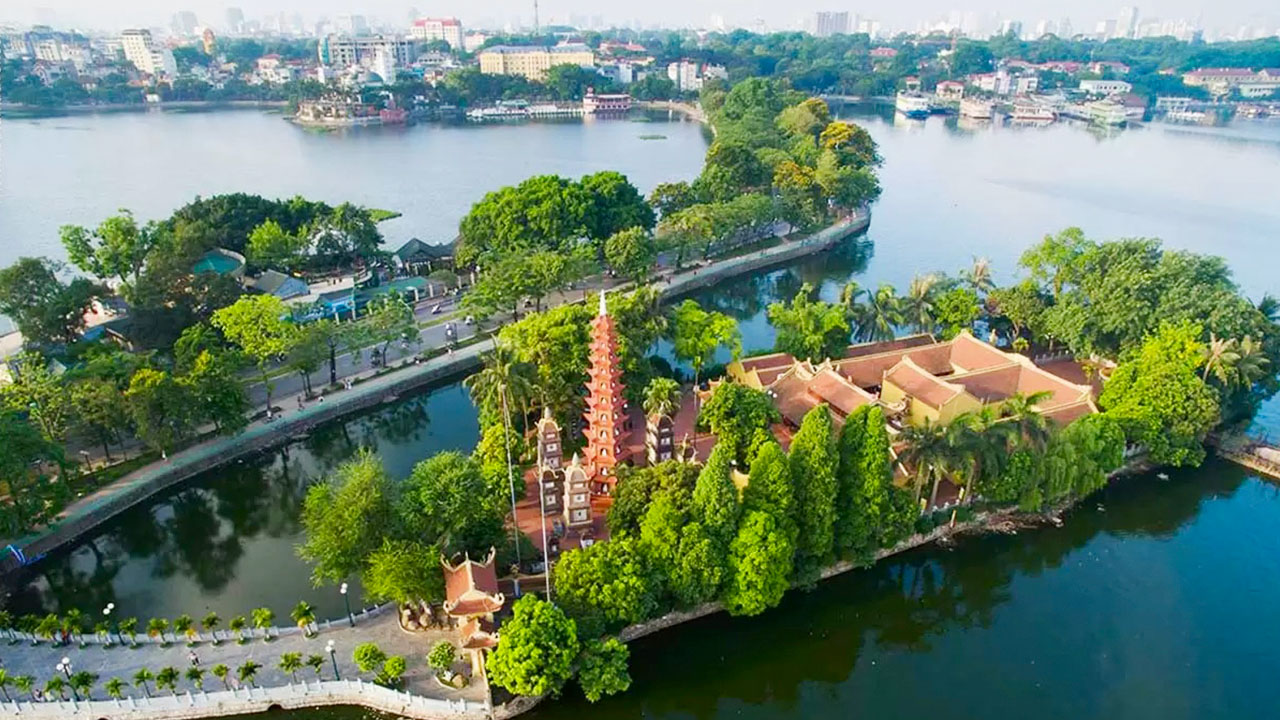
The pagoda features striking architecture, with its nine-story tower showcasing intricate designs that reflect Buddhist symbolism. Visitors can learn about its historical context and the pivotal role it played during the various dynasties in Vietnam. This makes Tran Quoc Pagoda an essential stop for anyone looking to dive deeper into the country’s spiritual landscape.
Ho Chi Minh Mausoleum: A National Landmark
Located just a short distance from Quan Thanh Temple, the Ho Chi Minh Mausoleum is a national monument dedicated to the founder of modern Vietnam. The mausoleum houses the embalmed body of Ho Chi Minh, allowing visitors to pay their respects to one of the country’s most influential leaders.
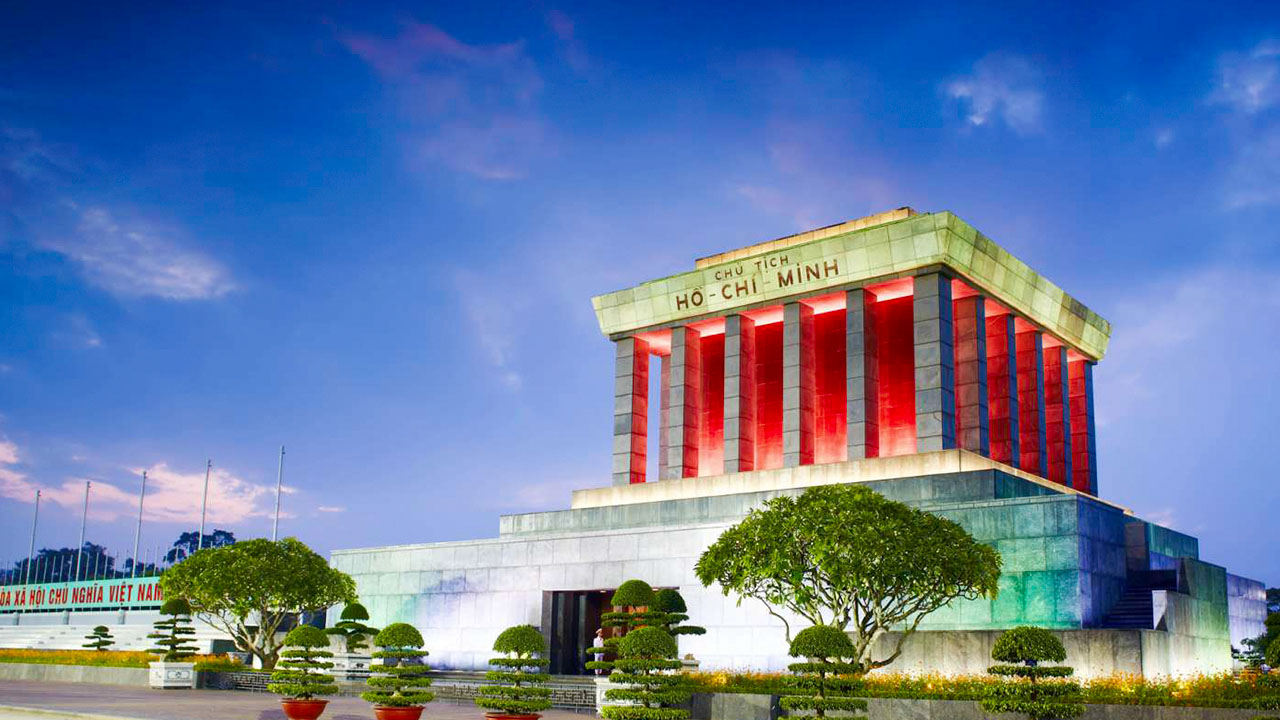
The structure itself is monumental and serves as a gathering place for people honoring the legacy of Ho Chi Minh. Exploring the mausoleum, along with the surrounding gardens and museums, provides insight into the revolutionary history of Vietnam while connecting the past to the present.
Best Food and Drink Spots Near Quan Thanh Temple
No visit to Hanoi would be complete without experiencing the local cuisine. The area surrounding Quan Thanh Temple offers a plethora of dining options that cater to various tastes and preferences.
Local Vietnamese Cuisine: Must-Try Dishes
Vietnamese cuisine is renowned for its diversity and flavor, and being in Hanoi means having access to some of the best dishes the country has to offer. Close to Quan Thanh Temple, visitors can savor traditional meals like Pho, a fragrant noodle soup, and Bun Cha, grilled pork served with noodles and herbs.
Street vendors offer a delightful array of snacks, including Banh Mi, a Vietnamese sandwich, and Cha Ca, a fish dish that showcases the region’s culinary prowess. Dining near Quan Thanh Temple allows travelers to not only nourish their bodies but also connect with the local culture through food.
Popular Cafés and Tea Houses in the Vicinity
Hanoi is famous for its coffee culture, and near Quan Thanh Temple, visitors can indulge in a range of cafés and tea houses. Traditional Vietnamese coffee, often served with condensed milk, offers a sweet and robust flavor that’s hard to resist.
Many cafés also serve unique teas infused with local herbs and flowers, inviting visitors to unwind and take in the surroundings. The relaxed ambiance of these establishments provides an excellent place for contemplation and reflection after a visit to the temple.
Street Food Options: A Culinary Adventure
For the adventurous eater, street food options abound near Quan Thanh Temple. The vibrant streets come alive with hawkers selling everything from savory pastries to mouth-watering grilled skewers.
Sampling street food not only satisfies cravings for authentic flavors but also immerses visitors in the bustling life of the city. Engaging with local vendors adds another layer to the experience, allowing travelers to learn about Vietnamese culture through its culinary traditions.
The Role of Quan Thanh Temple in Local Culture
Quan Thanh Temple plays a vital role in the cultural fabric of Hanoi, serving as a focal point for community events, religious practices, and artistic expressions. Its significance extends beyond mere tourism, influencing many aspects of the local way of life.
Community Events and Festivals Held at the Temple
Throughout the year, Quan Thanh Temple serves as a venue for various community events and festivals. Celebrations during the Lunar New Year attract large crowds, as families gather to pray for prosperity and good fortune.
These events foster a sense of community, bringing together individuals from different backgrounds who share a common faith. The vibrant atmosphere created during these festivities showcases the unity within the local population and reinforces the cultural importance of the temple.
Religious Practices and Rituals Observed
Religious practices at Quan Thanh Temple are diverse and deeply rooted in the beliefs of the local people. Daily rituals involve offerings of food and incense, while special ceremonies may include music and dance performances that honor the deities worshipped at the temple.
Visitors frequently observe locals engaging in these practices, providing a glimpse into the rich tapestry of Vietnamese spiritual life. This interaction between the temple and its worshippers emphasizes the enduring relevance of traditional customs in shaping cultural identity.
Influence on Local Art and Literature
The significance of Quan Thanh Temple extends to its influence on local art and literature. Writers and artists often draw inspiration from the temple’s rich history and serene ambiance, creating works that reflect the spiritual essence of the space.
Local legends surrounding the temple also serve as a muse for storytellers, preserving the narratives that define the cultural heritage of Hanoi. This continuous cycle of inspiration and creation reinforces the temple’s role as a cornerstone of Vietnamese artistic expression.
Visitor Experience at Quan Thanh Temple
Understanding the visitor experience at Quan Thanh Temple involves more than just the logistics of getting there; it includes the emotions, insights, and memories created during the visit.
Tips for First-Time Visitors
For those visiting Quan Thanh Temple for the first time, it is beneficial to approach the experience with an open heart and mind. Arriving early can enhance the experience, as the tranquility of the morning allows for reflection and introspection.
Respect for the spiritual nature of the temple is important. Visitors should dress modestly and adhere to local customs when participating in rituals, ensuring that they honor the traditions that are integral to the temple’s identity.
Guided Tours and Educational Programs
Many visitors opt for guided tours when exploring Quan Thanh Temple. Knowledgeable guides share stories and historical insights, providing a deeper understanding of the temple’s significance within the wider context of Vietnamese culture.
Educational programs may also be available, focusing on the religious practices observed at the temple and the architectural features that make it unique. Engaging in these experiences fosters a connection with the site that goes beyond surface-level appreciation.
Personal Stories from Past Visitors
Personal anecdotes from those who have visited Quan Thanh Temple illustrate the profound impact it can have on individuals. Many recount feelings of peace and solace while inside the temple, describing how the experience resonated with them long after they left.
Stories of spiritual awakening, connection to ancestry, and moments of reflection abound, illustrating how Quan Thanh Temple serves as a sanctuary for those seeking guidance and understanding. This collective memory strengthens the bond between the temple and its visitors, creating a legacy that transcends time.
Preservation Efforts for Quan Thanh Temple
As a historical site of immense cultural value, Quan Thanh Temple has faced challenges over the years in terms of preservation. Efforts to maintain its integrity are crucial for future generations to appreciate and learn from this remarkable place.
Restoration Projects and Funding Sources
Restoration projects have been undertaken to ensure the longevity of Quan Thanh Temple. These initiatives often involve skilled artisans who understand the traditional crafts necessary to preserve the temple’s architectural authenticity.
Funding for such projects typically comes from a mix of government support, private donations, and community fundraising efforts. The commitment from both the local government and the community reflects a shared responsibility for safeguarding their cultural heritage.
Challenges in Maintaining the Temple
Preserving a historical site like Quan Thanh Temple comes with its own set of challenges. Environmental factors such as pollution and weather conditions can take a toll on the structure, necessitating ongoing maintenance.
Additionally, balancing the influx of tourists with the need to respect the sacred nature of the site requires careful planning. Managing this dynamic ensures that the temple can remain a place of worship while welcoming visitors from around the world.
Community Involvement in Preservation
Community involvement plays a critical role in the preservation of Quan Thanh Temple. Local residents often participate in clean-up events, educational workshops, and fundraising initiatives aimed at maintaining the site.
This involvement fosters a sense of ownership and pride among the community, reinforcing the idea that Quan Thanh Temple is not just a tourist attraction but a cherished part of their collective identity. By engaging the community, the temple’s relevance continues to thrive.
Conclusion
In conclusion, Quan Thanh Temple stands as a beacon of history, spirituality, and culture in Hanoi. Its significance extends far beyond its physical structure, embodying the soul of Vietnamese identity and the harmonious coexistence of Buddhism and Taoism.
With its breathtaking architecture, rich historical backdrop, and the community’s unwavering commitment to preserving its legacy, Quan Thanh Temple encapsulates what it means to connect with both the past and the present. A visit to this sacred site is more than just a journey; it’s an invitation to explore the depths of Vietnamese culture and spirituality, leaving an indelible mark on the hearts of those who enter its hallowed halls.


